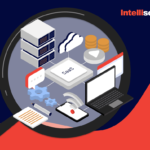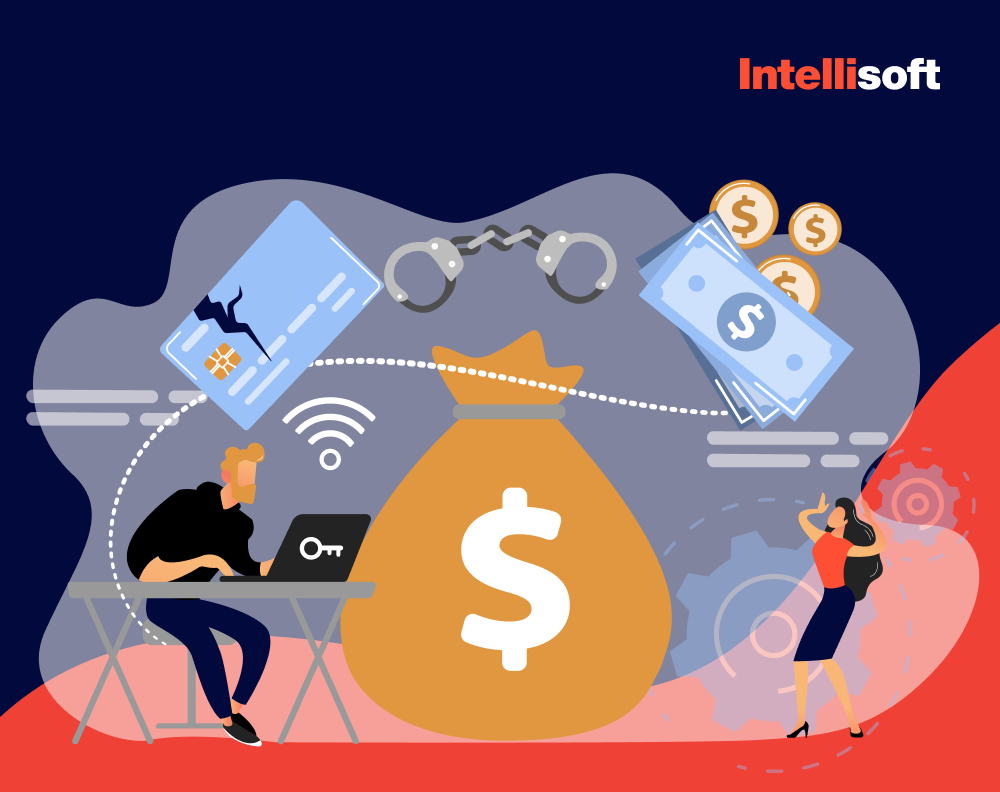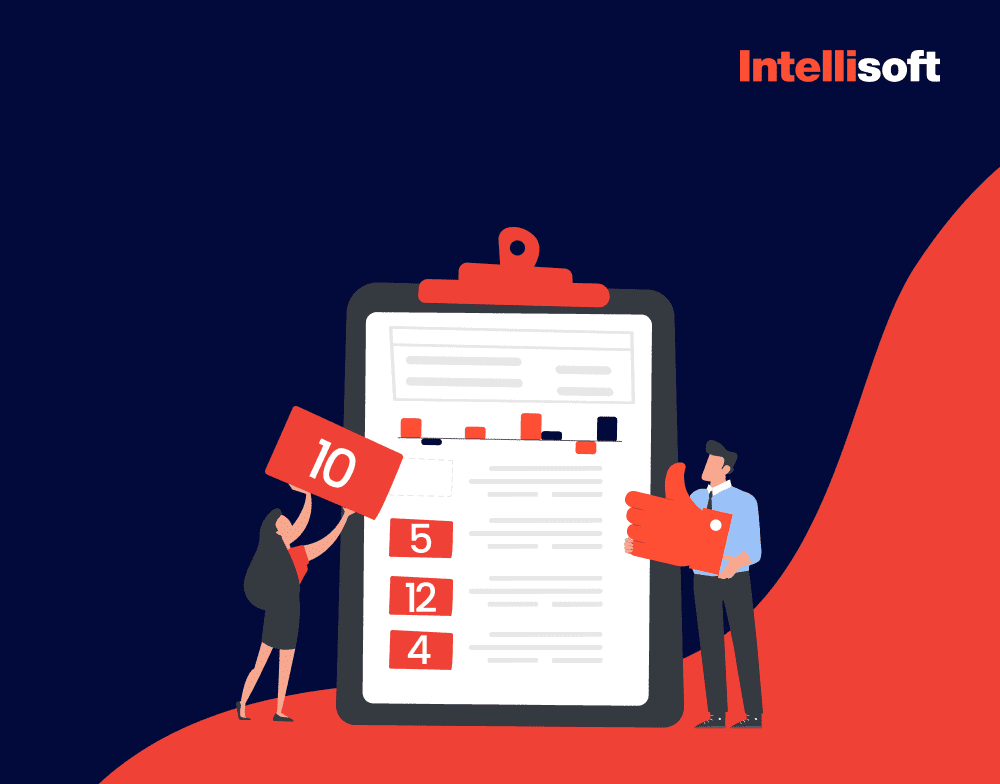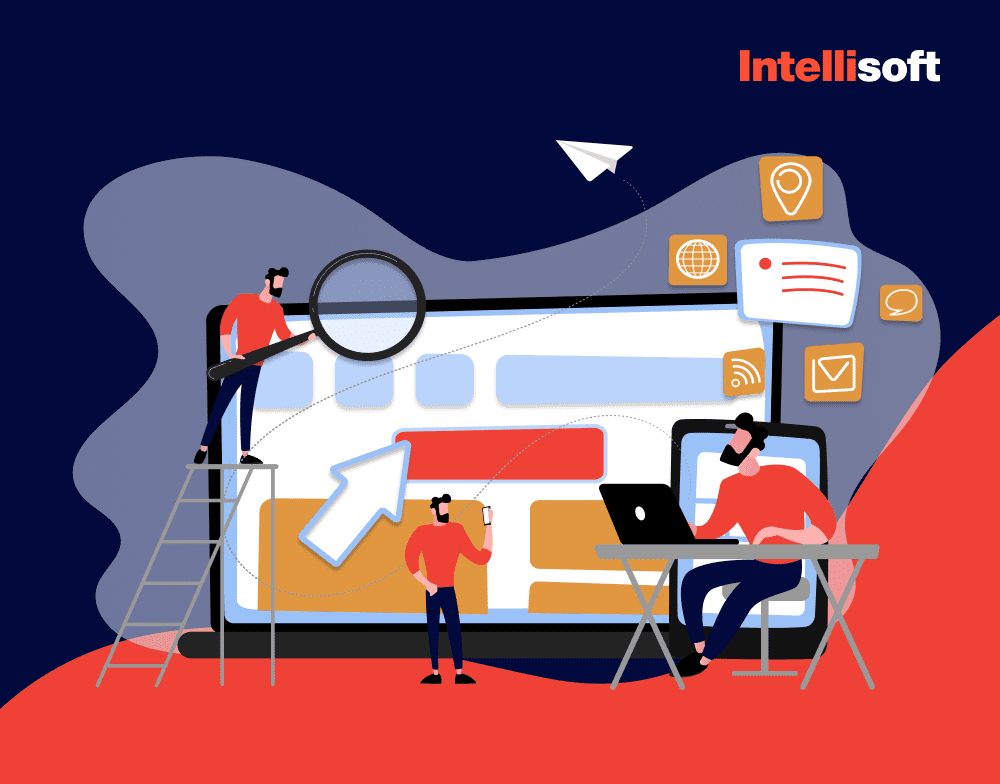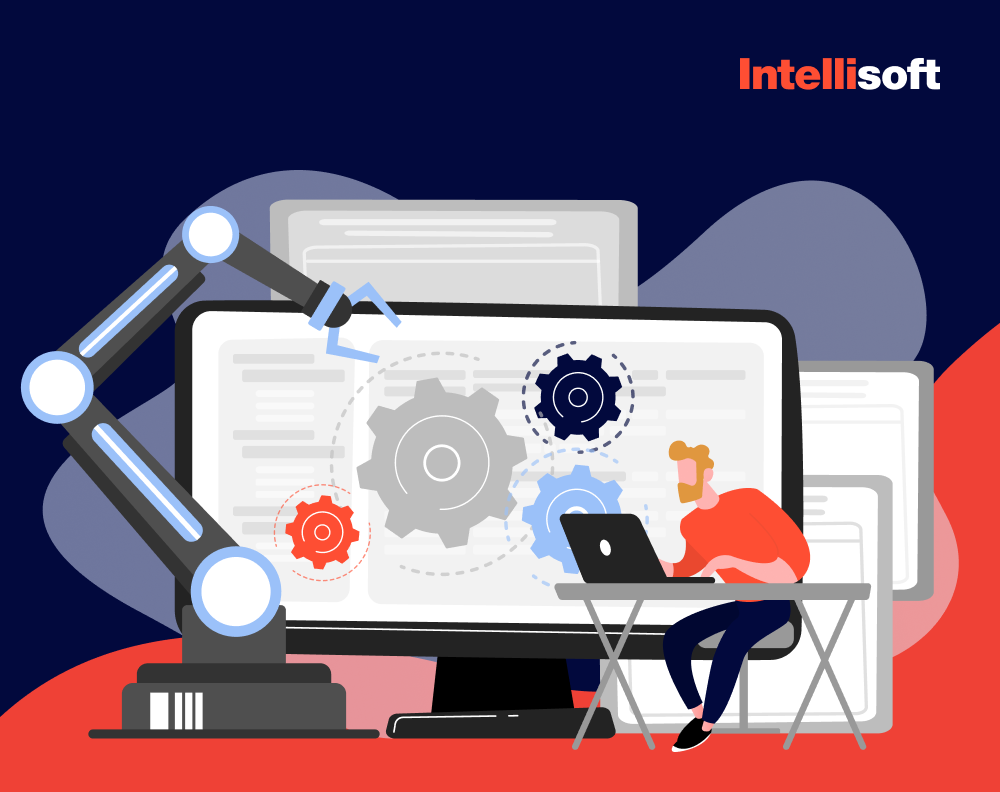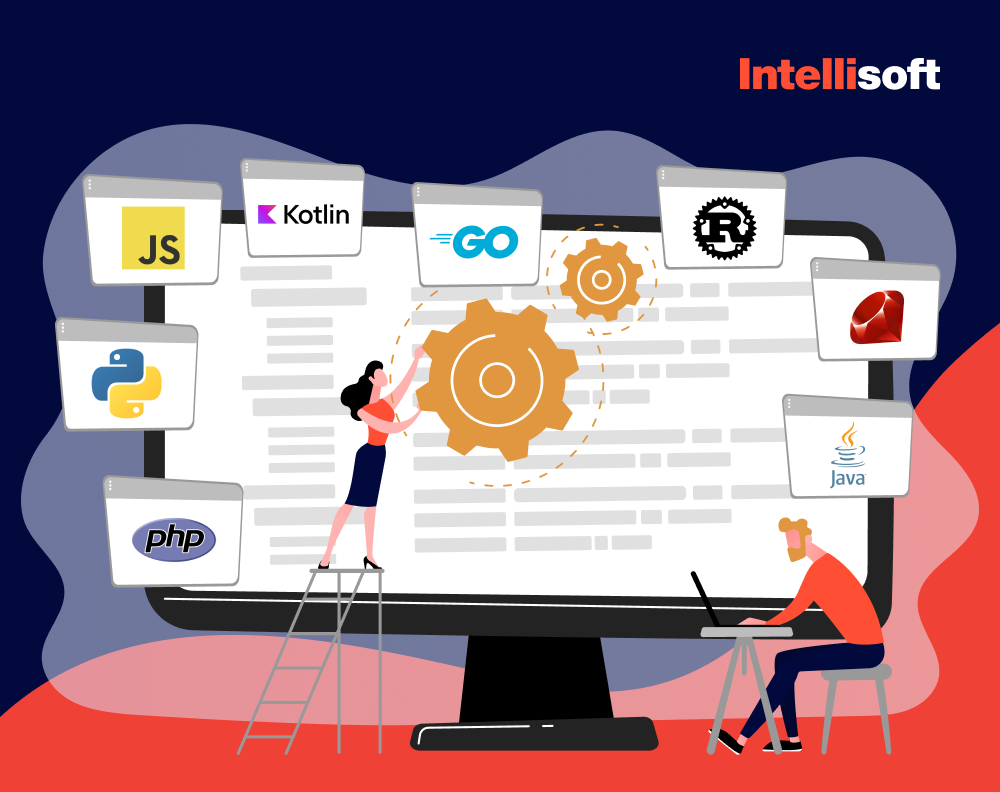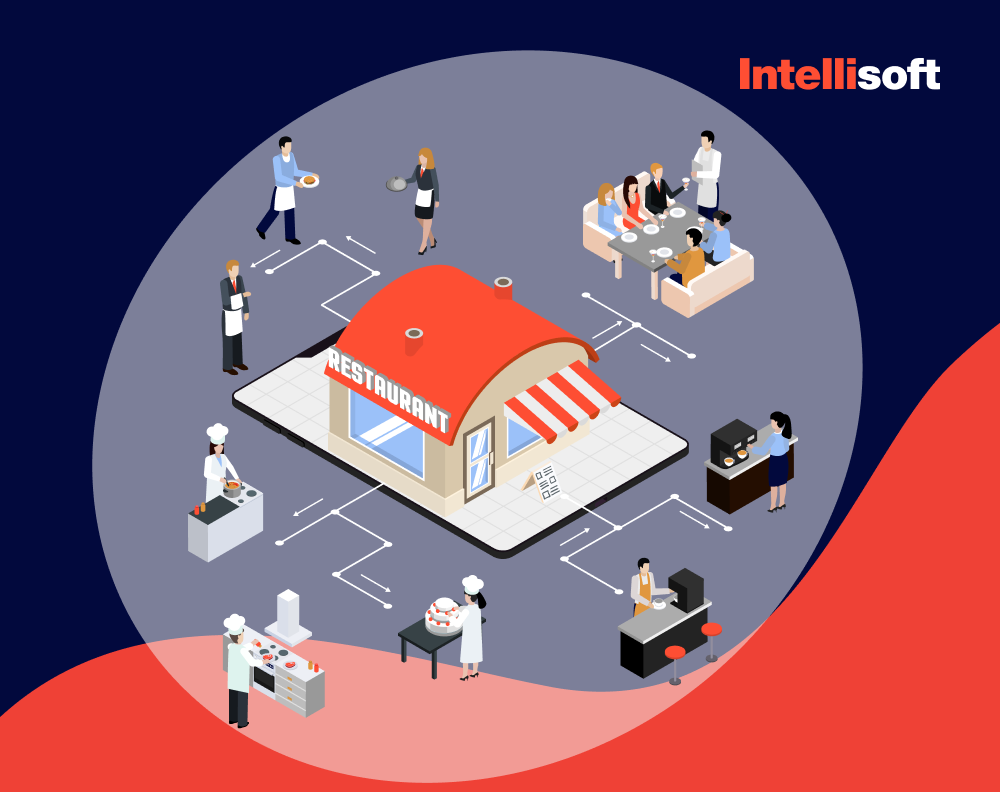Imagine a technology roadmap as your strategic guide through the ever-evolving world of IT—a master plan that illustrates how your technical capabilities will expand to bolster your business and delight your customers. It maps out not only your current infrastructure, architecture, and processes but also outlines your strategy for enhancements and innovations. Think of it as the blueprint that answers the “why,” “what,” and “when” of your major technology investments, setting the stage before you dive into the “how”—the nuts and bolts of development and implementation.
Whether you’re tackling essential core infrastructure updates, fostering growth through cutting-edge innovations, or managing the complexities of technical debt, a roadmap technology is indispensable. It acts as a critical bridge, connecting the dots between intricate IT operations and your overarching business objectives. By clarifying your technological direction, roadmaps empower you to sharpen your focus and accelerate the delivery of technology solutions that truly matter to your organization. Dive into this journey with a clear vision, and watch as your technology efforts align seamlessly with your business goals, driving success and innovation. We will also offer a free technology roadmap template for your projects.
Experts from IntelliSoft are ready to share the secrets of developing a powerful technology roadmap for your project. One good proof is what we did for Daintel, a healthcare start-up from Denmark. The client received the fully-fledged roadmap for technologies required for the MVP creation and further project improvement. In addition, we created a dedicated team to enhance the capacity of the local R&D and enhanced performance of the current hospital solutions. You can check more here.
Table of Contents
What Is a Technology Roadmap for a Product?
So, what is a technology roadmap? An IT roadmap or a technology roadmap is a general term with several applications. The most typical scenario is compiling a list of the equipment, tools, programs, and procedures employed by your company. By planning the evolution timetable and milestones that will show actual gains, this strategy assists in coordinating the technological stack with the strategic business goals.
The creation of the roadmap involves the following sequence of activities:
- Analyzing the strategy and mission of the product.
- Defining the requirements.
- Determining the time frame necessary for the implementation of tasks adapted.
- Drawing the map itself.
- Monitoring and adjustment.
Typically, road maps are created 18 months in advance and revised at least once every three months. Your technology roadmap will depend on the objectives you pursue, the distinct operational DNA of your firm, and the direction you want it to go. Therefore, despite comparable types and technology roadmap templates, there will never be two identical technology roadmap examples.
Why a Technology Roadmap Is Needed
Tech roadmaps are widely used in different spheres of business. Are you a corporate company that must meet cost- and revenue-efficiency quotas? Are you a startup that needs to make sure that your investments are as profitable as possible? Roadmap clearly shows the strategy of achieving a particular goal, whether it is implementation of a project, business development, creation and promotion of a product, or staff training.
A technology roadmap will ensure that your investments and efforts are in line with your long-term objectives, whether that means integrating a feature that your rivals already use but you don’t, or assuring the scalability of your company.
The primary advantage of the tool is its simplicity: due to its visual format, the information is easily perceived.

Roadmaps are widely used in different spheres of business, from IT to healthcare and law. Roadmap clearly shows the strategy of achieving a particular goal, whether it is implementation of a project, business development, creation and promotion of a product, or staff training.
In particular, benefits of a technology roadmap include:
- Capability to forecast IT expenses
A roadmap depicts the approximate timeline for implementing new features, processes, and tools and, as a result, can highlight upcoming costs. Of course, hardware can still fail unexpectedly, costing you in operational costs and data value, unless you have replication in place and contingency and failover plans in place. While unplanned expenses do occur, knowing when to expect predictable investments allows for better planning of the IT budget.
- Simplified communication and interaction
A technology strategy roadmap simplifies interaction between all those interested in the implementation of the strategy. This is especially true for complex and lengthy projects that involve a team of specialists from several departments as the roadmap makes it easier for them to synchronize their work.
A technology roadmap assists in aligning business goals and IT initiatives to improve interdepartmental communication, demonstrating how and when needs will be addressed, and explaining why some tasks take so long. It’s not because IT is a jerk; it’s because they need to do something else first in order to fulfill your request.
- Capability to attract better IT talent more quickly
A structured plan for IT system evolution aids in forecasting the need for new talent. As a result, your HR and talent acquisition departments can begin looking for qualified candidates long before they are required. You can get the best people for the job from the right talent pool.
- Productive employees’ time
The roadmap emphasizes mid- and long-term business objectives and draws the attention of your employees to it. Instead of doing routine tasks that can be automated, which is the roadmap’s top priority, it will free up employees’ time to focus on more important goals.
- Seamless transition to the cloud
If your company is cloud-first, the question of “to go cloud or not” should not bother you. However, if your company still uses mainframe systems or dedicated servers, as most do, cloud migration is a hot topic. Nonetheless, a poorly planned and executed cloud migration can render your business infrastructure inoperable. A technology roadmap assists in noting and tracking multiple steps for your cloud journey’s success.
- Detection of critical challenges and pain points
A roadmap will constantly remind your department of the problem and demonstrate how it affects the rest of the organization is a completely different beast. The technology roadmap assists each company in identifying critical challenges and allocating sufficient resources to address them on time.
- Development of the clear action plan
Roadmaps facilitate the development of the action plan. When you have a clear picture of the strategy, it is easier to think through individual tasks and subtasks at each stage.
- Development and maintenance of competitiveness
Every market is competitive, and competing solely on price does not work outside of grocery stores. Most outstanding businesses provide unique features or customer experiences that their competitors do not. The future technology roadmap highlights the time and resources required to implement cutting-edge technology and stay ahead of the competition.
EXAMPLE:
Uber would serve as an excellent example of how to remain competitive using a clear tech roadmap. It upended the transportation industry by allowing any driver to earn extra money and any passenger to arrive at their destination in a luxury car rather than a cab. This was accomplished by launching a user-friendly mobile app, whereas the rest of the market only provided a callback option. Almost every taxi company now has a mobile app, but Uber has already made a significant profit.
You might be also interested in reading:
- Software Development Organizational Structure: A Full Guide
- 5 Strategies on How to Lead Successful Projects as a Pro Project Manager
- 6 Most Effective Ways to Extend Your Software Development Team
3 Types of Technology Roadmaps
Technology roadmaps are classified into three types:
- App roadmap
- Dev roadmap
- IT roadmap
Let’s compare and contrast their similarities and differences.
Application Roadmap
An application roadmap is a company-wide initiative that creates a clear picture of the tools currently in use and planned for implementation. It aids in avoiding resource duplication, reducing the number of unused licenses, and establishing priorities. Planning out what to upgrade and when keeps your stakeholders informed.
IT Roadmap
Information technology roadmap aims to define how new IT components, whether a tool, a process, or a new technology, align with and support your business strategy. This type of roadmap can assist in answering the following questions:
- What IT initiatives do you intend to launch within a specific timeframe?
- How will they assist with hitting business objectives?
- How will this benefit a company in general?
Swimlane and Timeline are the two main technology roadmap modes. Swimlane displays all projects and stages such as Backlog, Design, Implementation, and Done, allowing you to see what is currently happening in your IT ecosystem.
The Timeline’s key advantage is that the time planned to deliver some projects usually roughly represents the number of resources required to complete them. If priorities shift, you can validate the resources allocated to each initiative and shift them from secondary to primary goals.
EXAMPLE:
This year, you want to increase the number of paid subscriptions by 30%. Converting your free tier users to paid users is one of the simplest methods. To accomplish this, you should invest in marketing strategy and a better marketing automation system. Your sales and customer support divisions may require a powerful CRM to address the needs of new paid customers and keep them happy; it may also necessitate updating internal IT systems to ensure better scaling. Creating an information technology roadmap is critical for coordinating and carrying out all of these activities.
Dev Roadmap
Software rules the world, and this statement still holds true a decade later. Most likely, your company offers products or services online that must be developed, released, and updated to be useful and profitable, and the dev roadmap aids in this process.
However, business stakeholders should not focus on every detail of each sprint. The technology development roadmap is not a project management (PM) control panel that contains all tasks, deadlines, bug reports, etc. It’s more of a high-level overview of the team’s product development priorities, so managers can quickly understand when a shiny new feature will be released and coordinate the work of other departments accordingly.
What Are the Components of a Technology Roadmap?
Creating a technology roadmap is like sketching a treasure map for your team. It outlines your vision, charts the course ahead, and keeps everyone focused on the collective goals. Here’s how to make your roadmap compelling and clear.
Goals
Set measurable, time-bound targets that anchor your strategic planning. For example, aim to automate 50% of regression tests within the year. Articulating these goals helps illustrate the purpose behind the tasks and decisions that fill your roadmap.
Initiatives
Think of these as major themes or focus areas that will drive you toward your goals. Placing initiatives on your roadmap connects the dots from why you’re doing something (the goals) to what exactly will be done (the initiatives).
Releases, Schedules, or Versions
This is about structure. Detail what will happen in upcoming sprints or releases, linking each one back to your overarching goals and initiatives. This shows how each piece of work contributes to the larger strategy.
Features, User Stories, or Tasks
Depending on your audience, adjust the granularity of your roadmap. For leadership, broad strokes might suffice, but engineers and operators appreciate seeing detailed features or tasks—they need to know what they’re building.
Timeline
Lay out key time frames, dates, and milestones to spotlight when things will happen. Consider showing not just when the team is ready, but also when new functions will go live for users, whether they’re internal or external.
Milestones
These are your major achievements plotted along the timeline, each tied to a specific date. They serve as performance targets, helping everyone gauge if you’re on track.
Training
Include any support or documentation that will help your team leverage the new technology. Mark training sessions as key events, celebrating them as mini-launches within your roadmap.
Risks or Dependencies
Identify anything that might derail your plans, from tech limitations to market conditions or team capacity. Discussing these openly can prepare you for hurdles along the way.
Status Indicators
Use labels, colors, or other markers to show progress. This visual cue is crucial for quickly communicating if things are going smoothly or if certain areas need attention.
When to Apply the Technology Roadmap Model
Free Example of a Roadmap
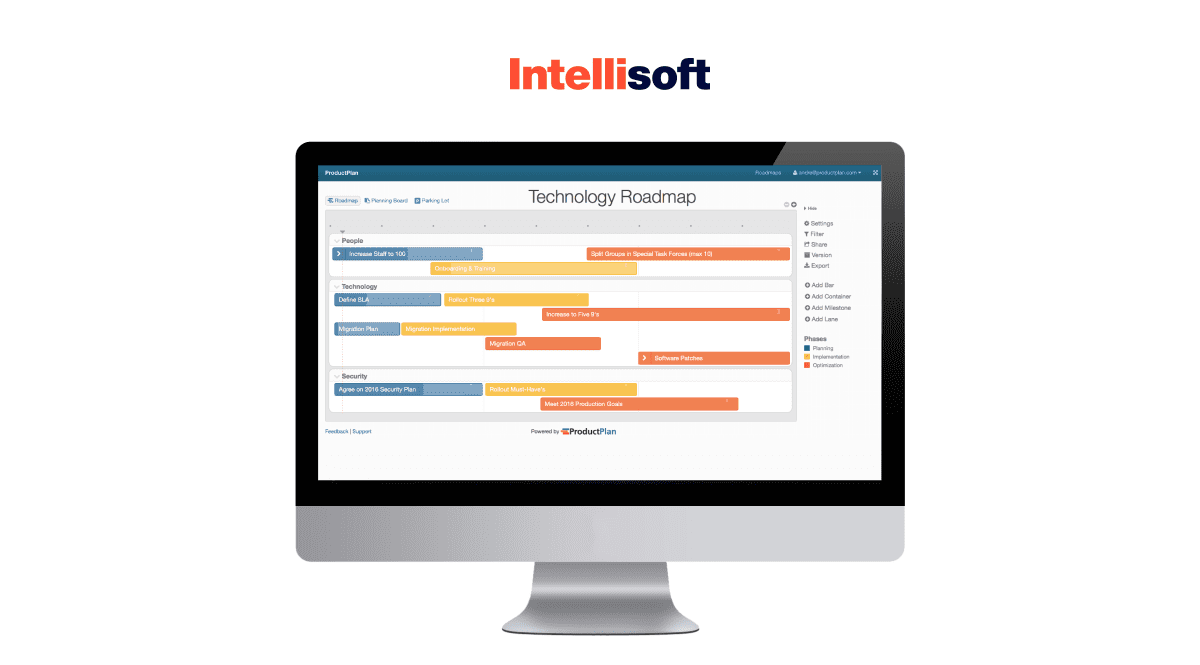
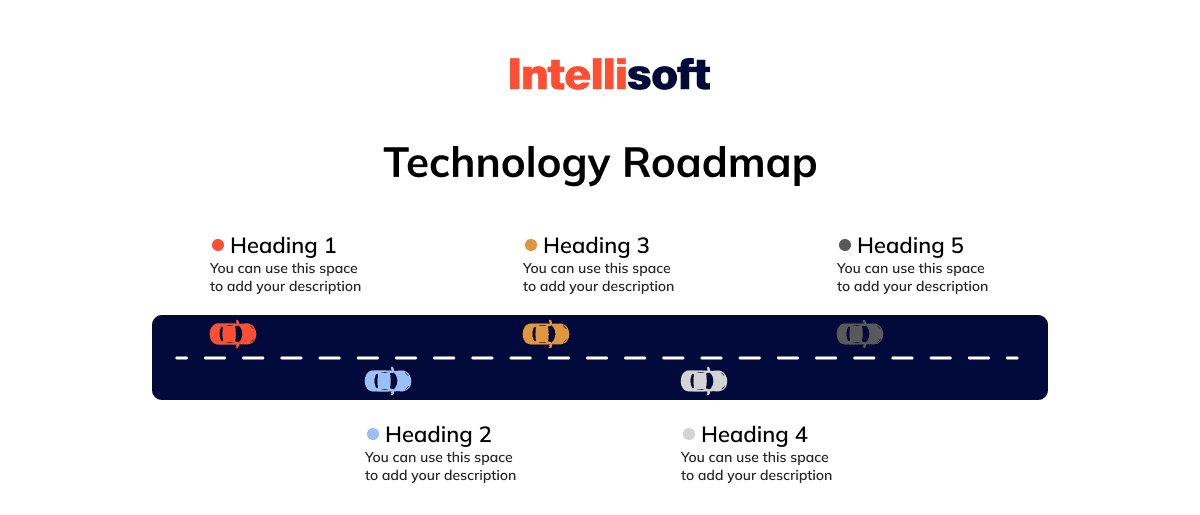
Product and tech roadmaps can be used to set a more accurate benchmark for future actions. They are useful for more in-depth analysis by professionals who are developing new markets, especially those with a technology orientation. To survive in such markets, it’s important to develop new products due to the constant shortening of product life cycles. Therefore, roadmapping is a very useful strategy for companies constantly looking for opportunities to create new products and services. Through this model, new markets, products, and technologies can be structurally defined.
Roadmaps typically include the following descriptions:
- Market introduction: a description of the product and the research required to create it.
- Purpose: results of market, product, and technology analysis.
- Timing: the critical path and timing of the product’s appearance on the market.
- Resources: money, people, and technology required to create new goods and services.
How to Build a Technology Roadmap for the Product
There will never be two identical roadmaps because they are dependent on a variety of factors. Scaling your business up or down, for example, requires two distinct approaches:
- In times of crisis, scaling down aims to save as much operational infrastructure as possible in order to avoid critical losses. To that end, the technology roadmap software assists in evaluating the importance of your IT assets and initiatives and indicating where to focus efforts.
- Scaling up is quite different, as you should concentrate on establishing a solid foundation for future growth. The methods for achieving this goal will vary depending on your industry, company type, product maturity stage, and so on. The goal here is to address the unique challenges you face while also maximizing potential profits.
The rest of the steps are fairly simple once you’ve decided on the direction of your company’s evolution.
Make data-driven decisions.
Guessing is a medieval practice. An IT director in the XXI century has access to a wealth of data:
- Historical gross and net revenue data — monthly, quarterly, and annual financial projections for the next year or so.
- Statistics on resource consumption.
- Current infrastructure performance and speed.
- Current data storage capacity, intake velocity, and expected term until capacity is exceeded.
It is possible to expand this list based on the company’s individual goals. Developing an IT roadmap aims to establish a productive dialogue among all business units and ensure that IT goals align with company goals.
Describe your goals and objectives: coming up with a roadmap’s design.
A roadmap is essentially a timeline, with your current IT situation on the left and the target you want to achieve in 18 months on the right. Divide these long-term goals into shorter tasks, assign them to responsible individuals, and you’re done! To be successful with your IT roadmap, you must consider several factors:
- Procedures & policies
Do you have a disaster recovery solution that is automated? Will customers ask for it in the near future? Answering such questions is extremely useful in implementing policies that affect all of your workflows.
- Acquisitions and mergers
Whether your company joins a larger organization or inherits the digital assets of a smaller partner, your technology roadmap must be adjusted.
- Scalability
Scalability must be built into the roadmap, and it must be prioritized during regular revisions. Are you exceeding the toolset’s scalability limitations? Perhaps, it’s time to retire tools that don’t scale well?
- Alternatives
The SaaS market is constantly evolving, and the tool that was the cream of the crop a year ago may now be obsolete. Thus, before embarking on a goal set 18 months ago, test the backgrounds and consider alternative options. That’s why quarterly roadmap revisions are beneficial in keeping its goals aligned with the business strategy.
- Working with outside consultants
To avoid mistakes, many businesses hire outside consultants. Whether you use them to assess the current infrastructure or delegate some ad hoc tasks, you can expect better results across the board. To ensure you get the most value, look for credible certifications, a diverse set of supported technologies, and clear communication.
Free Technology Roadmap Template
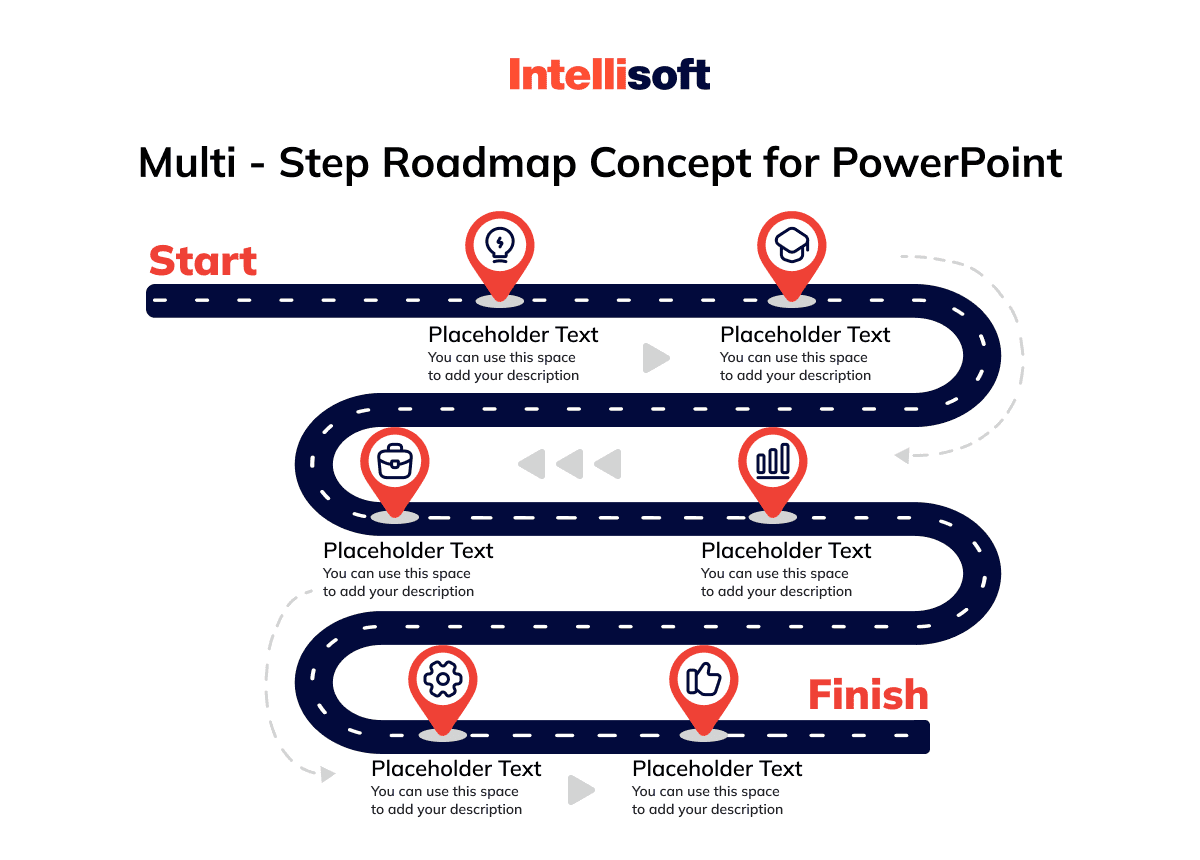
Tips & Tricks for Creating Technology Roadmap
In addition to the steps described above, you may benefit from following these recommendations:
- Roadmaps should be written by leading professionals who are recognized experts and have an excellent understanding of the specifics of a particular industry.
- If executives want the roadmap to actually have a positive impact on their company, they must actively participate in its development.
- Discuss the topics with your colleagues. Make sure everyone has the same vision for the strategy.
- Provide several ways to implement the main goal.
- Use common criteria for evaluating results that are clear to all stakeholders.
- Develop a flexible roadmap structure so that changes can be made regularly.
- Make sure to update roadmaps regularly to clarify ongoing product, market, and technology changes.
- A specialist from an outside company (e.g., a consultant) can help with the roadmap process and interviews with stakeholders.
- To ensure that communications related to the roadmap are effective and all such roadmaps are well aligned with each other, use a unified approach when drafting them.
- Provide the benefits of the implementation of the map.
- Don’t try to make the map too detailed. The level of accuracy depends on the audience: the narrower and more specific it is, the less detail is needed. Maps intended for several categories of users should contain more details, so that everyone understands everything.
Tools Where One Can Create a Technology Roadmap
There are many technology roadmap tools. Consider different options, from simple spreadsheets to special services.
- Spreadsheets
The easiest and free tool to create an IT roadmap is an Excel or Google spreadsheet. They can include all the necessary information – about goals and objectives, responsible persons, deadlines, status, etc. The disadvantages of spreadsheets are the lack of clarity and the inability to quickly edit.
- Presentations
Presentations in PowerPoint or another program like Prezi, unlike tables, allow you to visualize information. However, in other respects, presentations have the same disadvantages: they are not updated and synchronized in real time.
- Ad hoc services
A modern alternative to spreadsheets and presentations are services specifically designed to make road maps. They are paid, but provide maximum opportunities for visualization. Maps created with the help of such services are automatically updated for all users.
The service contains pre-installed technology roadmap samples. Gantt chart is used as a method of visualization. The service is available for an unlimited number of simultaneous users. The minimum subscription price is $5.83. There is a 14-day free trial version.
Paid product with a minimum subscription cost of $39 per month (there is a 2-week test period). Integrates with popular services for project management, contains chat, allows to export files, and supports different IT roadmap visualization options.
Service contains more than 100 templates for the development of road maps. This app is available only in web version. A monthly subscription costs $49 for businesses, $19 for individuals. Free mode with limited features is also provided.
Technology Roadmap Examples and Use Cases
Technology roadmaps are indispensable tools that serve a myriad of purposes, from unveiling exciting software updates and release timelines to outlining critical data migration and security strategies. These dynamic guides not only keep customers informed but also engaged with the continuous evolution of their preferred platforms.
Take, for example, the Microsoft 365 roadmap—an exemplary showcase of transparency and user engagement. It offers users a glimpse into the future of their favorite productivity tools and intelligent cloud services. With each visit, users can explore upcoming features, the latest software releases, and crucial security enhancements. This roadmap stands out by providing insights typically reserved for internal stakeholders, such as the developmental phase of each item, its preview, and anticipated launch dates, making users feel like true insiders.
Technology roadmap examples also cover GitHub’s public technology roadmap, which is a treasure trove for its vast user base. It organizes updates—including security enhancements and API upgrades—into well-defined themes, simplifying navigation and enhancing comprehension. This roadmap is more than just a tool; it’s a critical resource for anyone involved in software development, delivering invaluable insights that help users stay ahead in a rapidly evolving digital landscape.
By employing these roadmaps, companies like Microsoft and GitHub not only bolster user experience but also foster a sense of community and co-innovation, as they navigate the complex technology ecosystem together.
Verdict
Exciting new features not only add value for customers but are crucial in meeting your product and company objectives. That’s where a technology roadmap comes into play. It’s a clear plan that outlines how your technology will grow and adapt to align with your business goals. It also helps you seize market opportunities and embrace innovations.
We hope this guide has given you a better understanding of why technology roadmaps are so beneficial and how to effectively create them using our technology roadmap template.
Whether you are ready with your roadmap or not, IntelliSoft has talents to carry out your software projects of any difficulty. You can get free consultation if you contact us today. We offer professional outsourcing services to implement your ideas!
